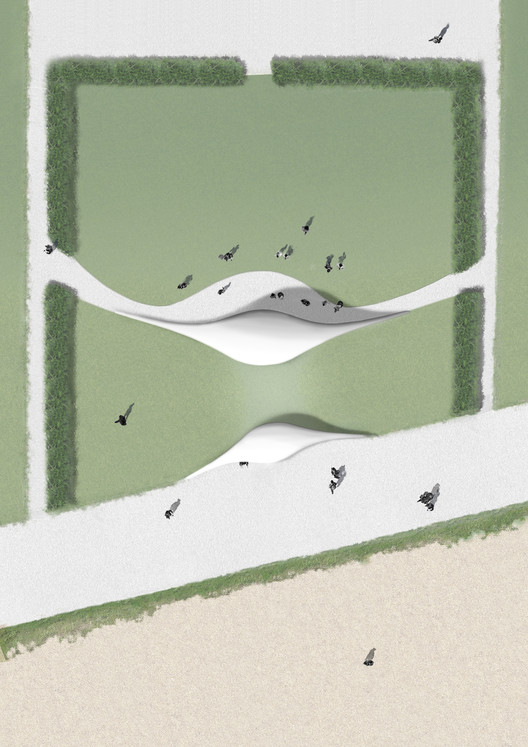
-
Architects: Flanagan Lawrence
- Year: 2014

Text description provided by the architects. Sited in a sunken garden beside the beach in Littlehampton, West Sussex, UK, these ‘Acoustic Shells’ act as a stage and shelter for the local community. Prompted by a desire to reinvigorate Littlehampton with its gentility of the early 20th century, the shells materially enhance the public open space of the adjacent greensward and satisfy an essential social need that is not provided elsewhere in the area.


















